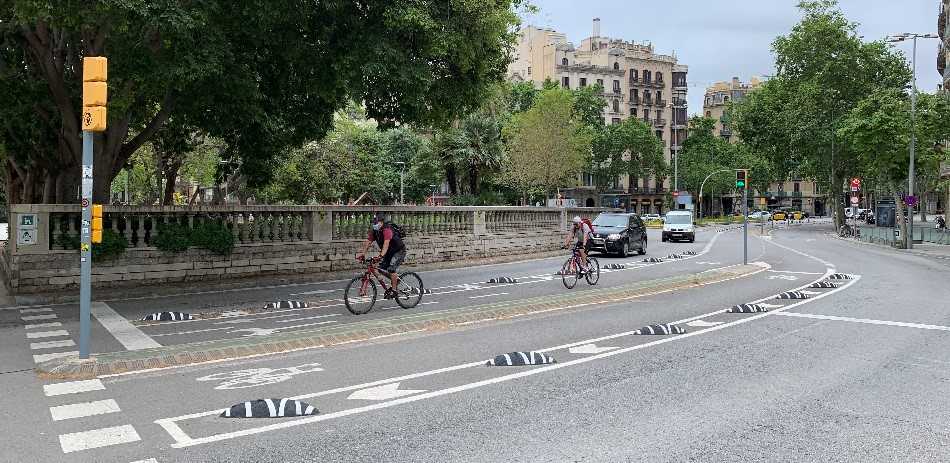Barcelona is changing the paradigm of mobility and is moving towards a healthier, more sustainable, and safer mobility. The city has an extensive transport network that guarantees the mobility of all in an equitable, efficient and safe way, in which public transport, cycling, and walking are the priority means and the most used by the millions of people who daily move around the city.
The cycling infrastructure.
The criteria for the construction of the cycling infrastructure of the city of Barcelona is based on the creation of cyclable axes in the form of a network, from sea to mountains and from Llobregat to Besòs, so that all citizens can have safe routes to get anywhere by bike. Complementary bi-directional or unidirectional bike lanes, traffic pacified areas or zones 30, single-lane roads, where bikes have priority, among others, are part of these axes.
The aim is to have a complete and connected cycling infrastructure that is useful provides service to the entire city and guarantees safety for all modes of transport.
Before and after the construction of the lanes and the cycling infrastructure, it has been analyzed on a case-by-case basis and each section has been adapted to the needs and contributions that residents can make. In this sense, a series of information sessions have been held in all districts to share and discuss the different actions to be carried out in the territory.
The new bike lanes.
The new bike lanes are built on the road and segregated from road traffic, with previous paving and efficient signaling, to guarantee that movements are made safely and comfortably, and in coexistence with other modes of transport. The fact that the bike lane is on the road prevents pedestrians from invading the lane when they move and does not compromise space on the sidewalk, which is the pedestrian’s own space.
The new bike lanes under construction also have a series of improvements, such as advanced areas for bicycles at traffic lights; the so-called bike chamfers (or bike corners), the crossings between lanes designed as a protection area and exclusive access for bicycles; registered bike lanes, or one-way bike lanes in the opposite direction to traffic on 30 streets.



0 Comments